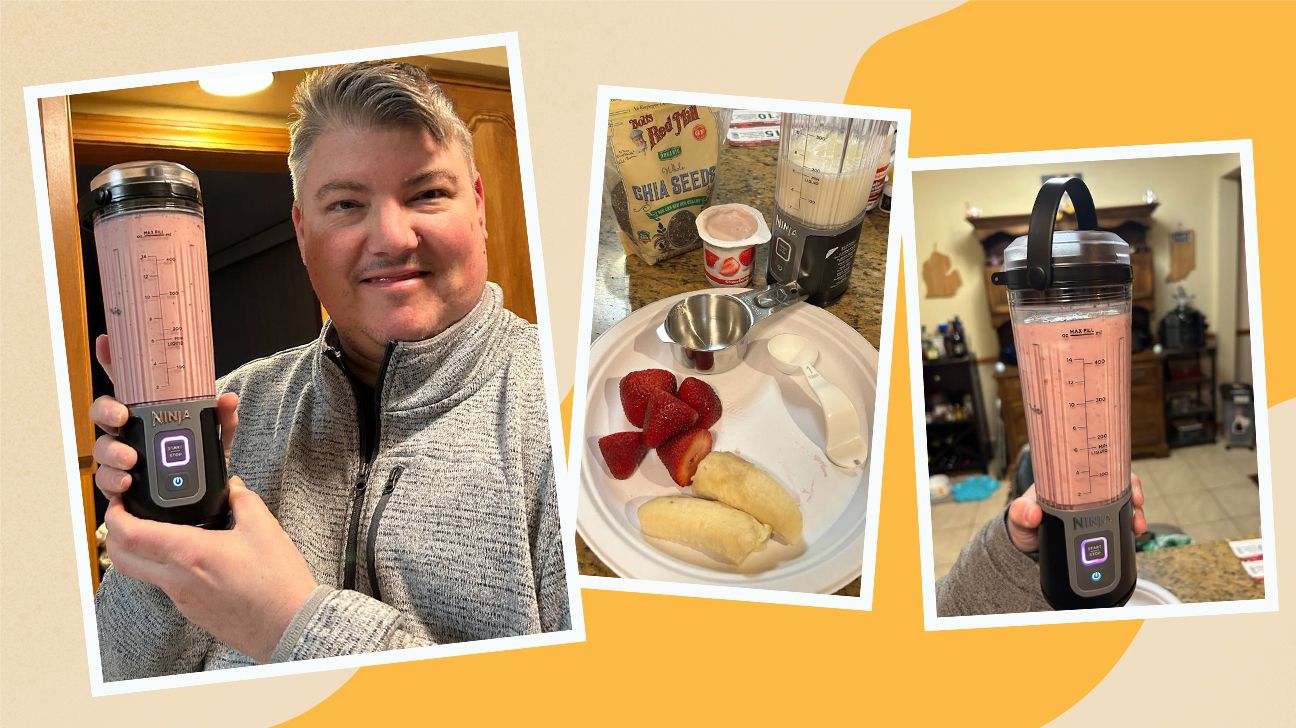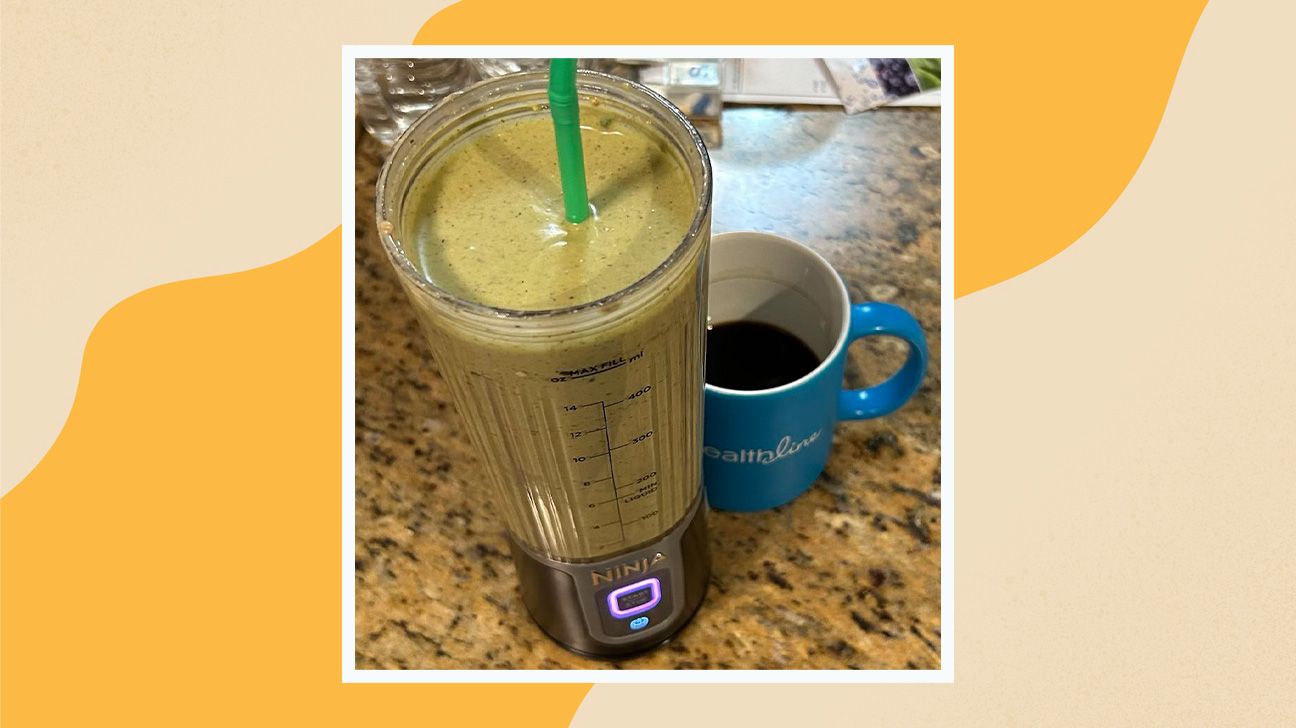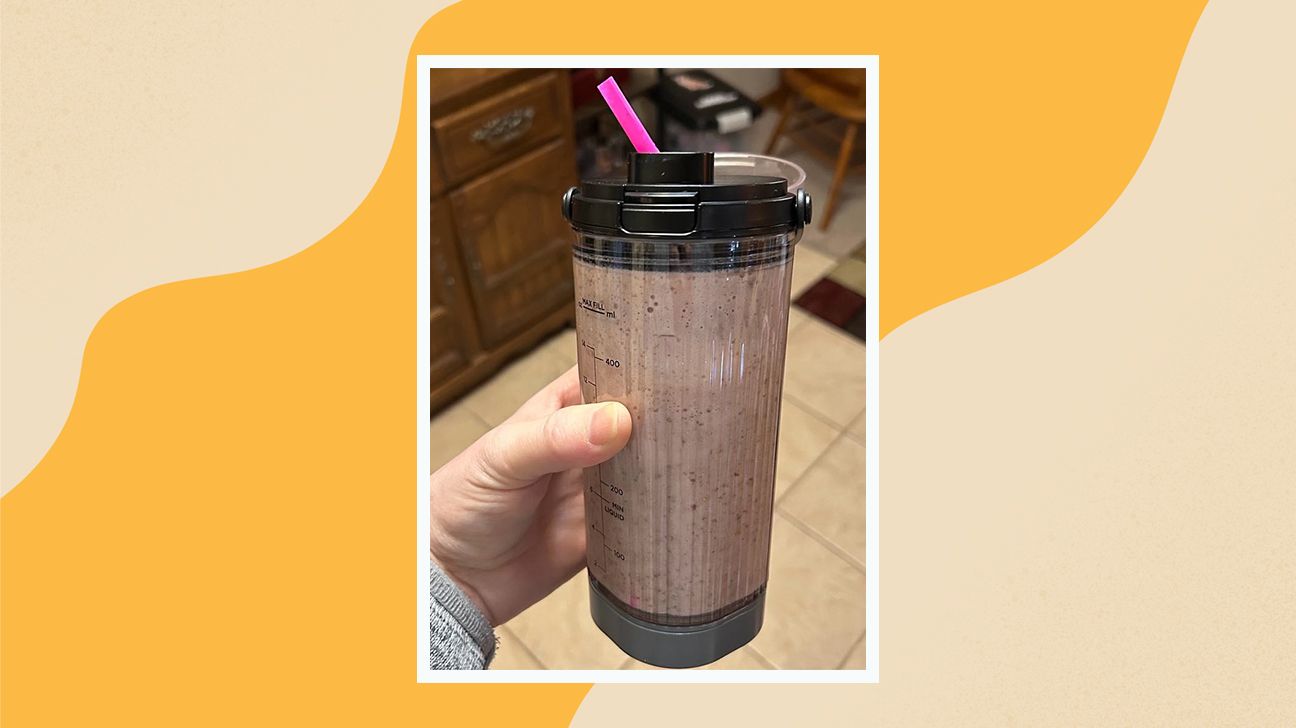What if you’re a smoothie newbie who wants to make your own green, coffee, or strawberry banana recipe? I tried this with various ingredients, including Greek yogurt, milk, avocado, fruit, spinach, and chia seeds.

I’d never made a healthy smoothie before.
Smoothies are generally good for your health, but I had never ventured to try them out for myself. Too much hassle, buying specific ingredients that I might not otherwise have at home, and a general distaste for healthy food crazes.
This changed for two reasons: a conversation with work colleagues piqued my interest, and my recent gut health adventures changed my mind.
In recent months, I’ve been living with digestive challenges that required some eating habit changes in my life. Along with my type 1 diabetes care plan and hyperfocus on blood sugar management, the idea of smoothies sounded more interesting.
Protein and fiber were my main focuses when making my smoothies. I made this effort to improve my gut health, manage my diabetes, and be healthier overall.
The smoothie-making experiment and adventures began. Here’s how I went about my homemade smoothie experiment and settled on a few different recipes.
The basic recipe is the same for all varieties. I swap out certain ingredients and mix and match based on my current preferences.
Using a portable mini blender that holds 18 fluid ounces, I am a bit limited in how much of each ingredient I can use:
- 3/4 cup, minimum 6-oz liquid fill line, of low fat cow’s milk or almond milk
- 1/2 cup of cottage cheese or Greek yogurt as the protein base
- 1 tbsp chia seeds for fiber
- fresh fruit (1/2 banana, 1/2 cup strawberries, maybe blueberries)
- half avocado
- 1/2 cup of kale or spinach (an excellent source of vitamins A, C, and K), or an opportunity to add in other veggies per your preferences
A word on protein powderAlthough I didn’t use any protein powder, this may be an option to add more protein if that’s the goal.
Try one of these best protein powders as reviewed by Healthline.
Each of my three main smoothie versions varied slightly, depending on specific ingredients and my aimed focus for what I was making:
- Coffee
- Green
- Strawberry Banana

The greener you want it, the more spinach or kale you can add. Less liquid makes it thicker, while the banana and avocado add a smoother texture.

I used several recipes for guidance in crafting my homemade smoothies.
Nutritional value varied with the ingredients. But generally, I came out with:
- Calories: 400
- Carbs: 55 grams
- Protein: 35 grams
- Fiber: 13 grams
- Added sugar: 12 grams (depends on type of yogurt or milk)

Want to try my homemade recipe?
Protein-fiber boost smoothie
You can make this base recipe with different ingredients, including coffee, fruits, and green veggies.
Based on all that, here’s what I learned as part of my protein-fiber boost smoothie experiment.
Frankly, my first attempt at diving into the smoothie-making universe was a colossal failure. But it also presented a key lesson: This is why recipes exist.
Know your smoothie-making device
Before you start, make sure your blender is charged and ready to use. Read the instructions if you’ve never used it.
Know the different settings and indicator lights, including if it’s jammed, not charged enough, or not assembled correctly. This can throw off your entire smoothie-making process.
Add liquid first
Most of the smoothie recipes I read instructed me to add the liquid first. This may depend on your blender’s power and mixing force, but smaller, lower quality mixers may get jammed more easily.
I didn’t listen to that guidance my first time, and it cost me that smoothie.
Focus your smoothie
Follow the recipe. Trying out all the exciting ingredients and making an everything smoothie can be tempting. Know the focus of your smoothie recipe and color within those lines so you’re not overloading or deviating too much.
Don’t throw in the kitchen sink
The first time was a mess. I tried overloading my smoothie blender. This led to it overflowing and not turning out well. It was quite thick, more than to my liking, and I disposed of it.
Once I became familiar with the base recipes, I became more comfortable and knew what to expect. That allowed me to start experimenting with all sorts of other nutritious add-ins, from different fruits and veggies to flaxseed, raw nuts, oats, and beyond.
Freeze ingredients overnight
Some recipes suggest adding ice to thicken a smoothie. I found freezing the banana or strawberry added a nice frozen component, thickening the final product just enough without adding ice cubes or refrigerating before drinking.
Pay attention to the digestive effects
After two smoothies in just a few days, I noticed the digestive effects of that influx of protein and fiber into my day. The effects balanced out in about a week.
If you’re having digestive health issues and are considering adding more fiber or protein to your routine, it may be best to talk with your doctor or healthcare team.
This did not dramatically spike my blood sugars because of the higher protein and fiber mixed with the fruit. My continuous glucose monitor showed only a gradual rise over the course of an hour.
The fruit had the most effect.
Yes, a smoothie may not be a low calorie or low carb option. But it does the job, and within my diabetes management plan, it makes sense for me a few times a week.
This smoothie newbie is now trial-tested and experienced in a few varieties that involve fresh fruit, veggies, protein, and fiber.
At first, I may have been a newbie, unprepared for what I was getting into. But after a few rounds of using this basic recipe and fine-tuning my process, I began thinking of myself as a
But after a couple of experiments, I better understood how to let my smoothie become what it needs to be rather than a hodgepodge of ingredients envisioned in my mind.
While I may not make a homemade smoothie every day because of the cost, effort, and interest involved, I plan to keep up with it at least once a week.
Mike Hoskins is an editor at Healthline. For a decade, he was managing editor for DiabetesMine and tapped into his life with type 1 diabetes since childhood. Mike has 25 years of journalism experience at daily, weekly, and specialty print and digital media publications, including his own personal diabetes blogging and advocacy.
Connect with us!
Have you found or searched for the perfect smoothie recipe? We’d love to hear your tips and tricks, or certain ingredient swaps that have worked for you.
- Explore our healthy smoothie recipes.
- Sign up for our Nutrition newsletter.
- Learn what else you can do to help your daily digestive and gut health.






